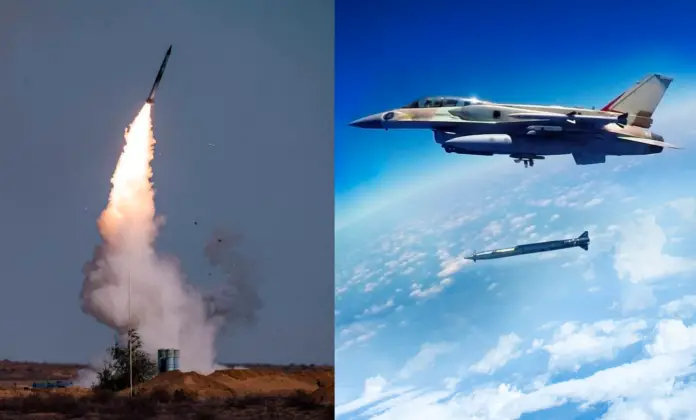<p >Responding to Israeli attacks in the early hours of October 26, Iranian air defence units were reported to have shot down multiple incoming air launched missiles around the capital Tehran. The intention behind the very small scale attack was <a href=" >evaluated at the time</a>, with circumstantial evidence indicating that air defences were successful in intercepting all targets. Although Western and Israeli sources have made contradictory reports regarding how many waves of Israeli attacks were launched, reports from Iranian sources indicate more than one wave of missile strikes. Israeli attacks notably used long ranged air launched missiles, which could be fired from far outside Iranian airspace and well beyond the range of the country’s air defences – thus minimising risks to Israeli aircraft. This mirrors the approach taken in most strikes on Syrian targets, particularly after the loss of an Israeli F-16I fighter in February 2018 to an Israeli S-200 air defence system.&nbsp;This is also&nbsp;consistent with leaked&nbsp;<a href=" target="_blank" >U.S. intelligence reports&nbsp;</a>that Israel planned to use long range air launched ballistic missiles to strike Iran.&nbsp;</p><p ><img src=" title="Israeli Air Force F-16I"></p><p >Reports from Iranian sources indicate that while medium range surface to air missiles were used to neutralise Israeli missiles used in the first wave of attacks, long range air defence systems were subsequently employed. This included the first ever use by the country’s armed forces of an air defence system to strike a target over 100 kilometres away. The Iranian Air Defence Forces field multiple surface to air missile systems capable of engaging targets at such ranges, including a heavily customised variant of the Russian S-300PMU-2 delivered in 2018. Although the standard longest ranged armament for the S-300PMU-2 is the 48N6E2 which has a 200 kilometre range, the system is reportedly compatible with the much more modern 48N6DM which can engage missiles at very high supersonic speeds including hypersonic speeds exceeding Mach 5, and has a 250 kilometre range. Iran was reported in 2020 to have&nbsp;<a href=" new missiles&nbsp;</a>for its S-300s, which were speculated to be 48N6DM missiles. China previously tested this Russian-supplied missile class to successful intercept targets travelling at speeds exceeding Mach 8 at 250 kilometre ranges – a performance far exceeding that of any of Israel’s air launched missiles.&nbsp;</p><p ><img src=" title="Surface to Air Missile Battery From Iranian S-300PMU-2 System"></p><p >Alongside the S-300, Iran also fields a range of less advanced long range air defence systems that are also capable of intercepting targets over 100 kilometres away. The country’s first system capable of engaging targets at such ranges today remains its longest ranged system, namely the Soviet S-200D, which was acquired in the 1990s and has a 300 kilometre engagement range. S-200s have&nbsp;<a href=" to be modernised&nbsp;</a>in the country, including through provision of road mobility. Nevertheless, the systems are not optimally suited to neutralising small targets such as air launched missiles, although they provide an effective defence against larger ballistic missiles such as the Israeli Jericho, and can potentially neutralise fighters far outside Iranian airspace should they be flying at sufficiently high altitudes.&nbsp;The addition of more modern electronic warfare countermeasures, and integration of S-200s with other air defence assets using much more modern radar systems, allows them to still provide a significant contribution to Iranian air defences.</p><p ><img src=" title="Surface to Air Missile Battery From Bavar-373 System"></p><p >Iran’s most capable indigenous long range air defence system the Bavar 373 was reported in April to have also achieved a 300 kilometre engagement range through integration of the <a href=" >new Sayyad 4B missile</a>. There is a significant possibility that the widely used system was employed to repel recent strikes, including possibly for interceptions of incoming Israeli missiles at ranges of over 100 kilometres. Iran’s Khordad 15 system represents a lighter counterpart to the Bavar 373 with notably also retains an engagement range of well over 100 kilometres, although it remains uncertain whether this system has been fielded on a large scale. Little information regarding the Khordad 15 has been revealed since it was first unveiled in the summer of 2019. Iran’s reliance on ground based air defence systems remains very significant due primarily to its lack of modern fighter aircraft, with its multi-layered air defence network representing an unprecendetedly <a href=" target="_blank">potent challenge </a>for Israel and its Western Bloc allies that complements the country’s formidable ballistic missile deterrent.</p>
Iran Makes First Use of 100km+ Range Anti-Air Missiles to Repel Israeli Strikes: Which Air Defence Systems Did It?

